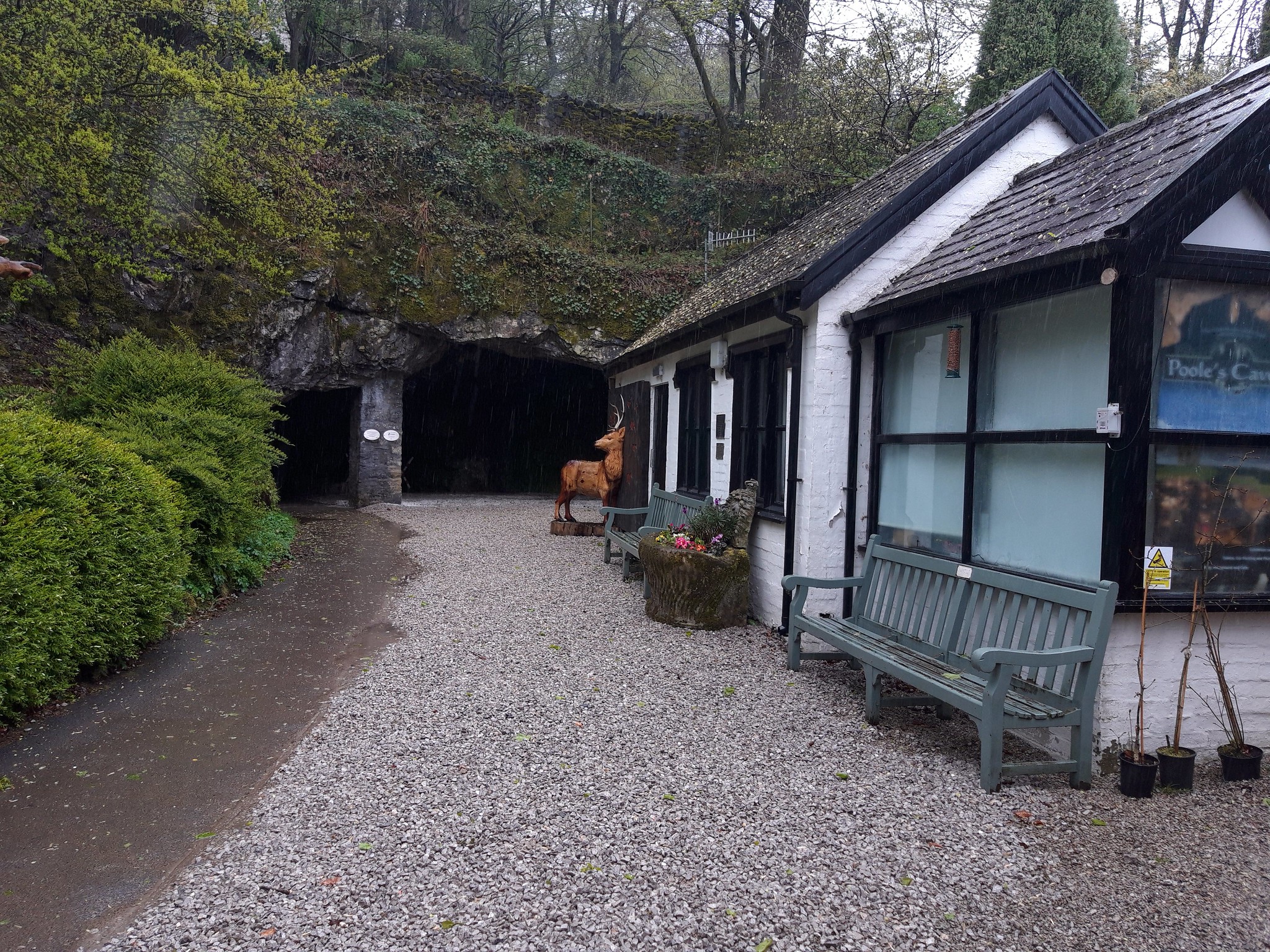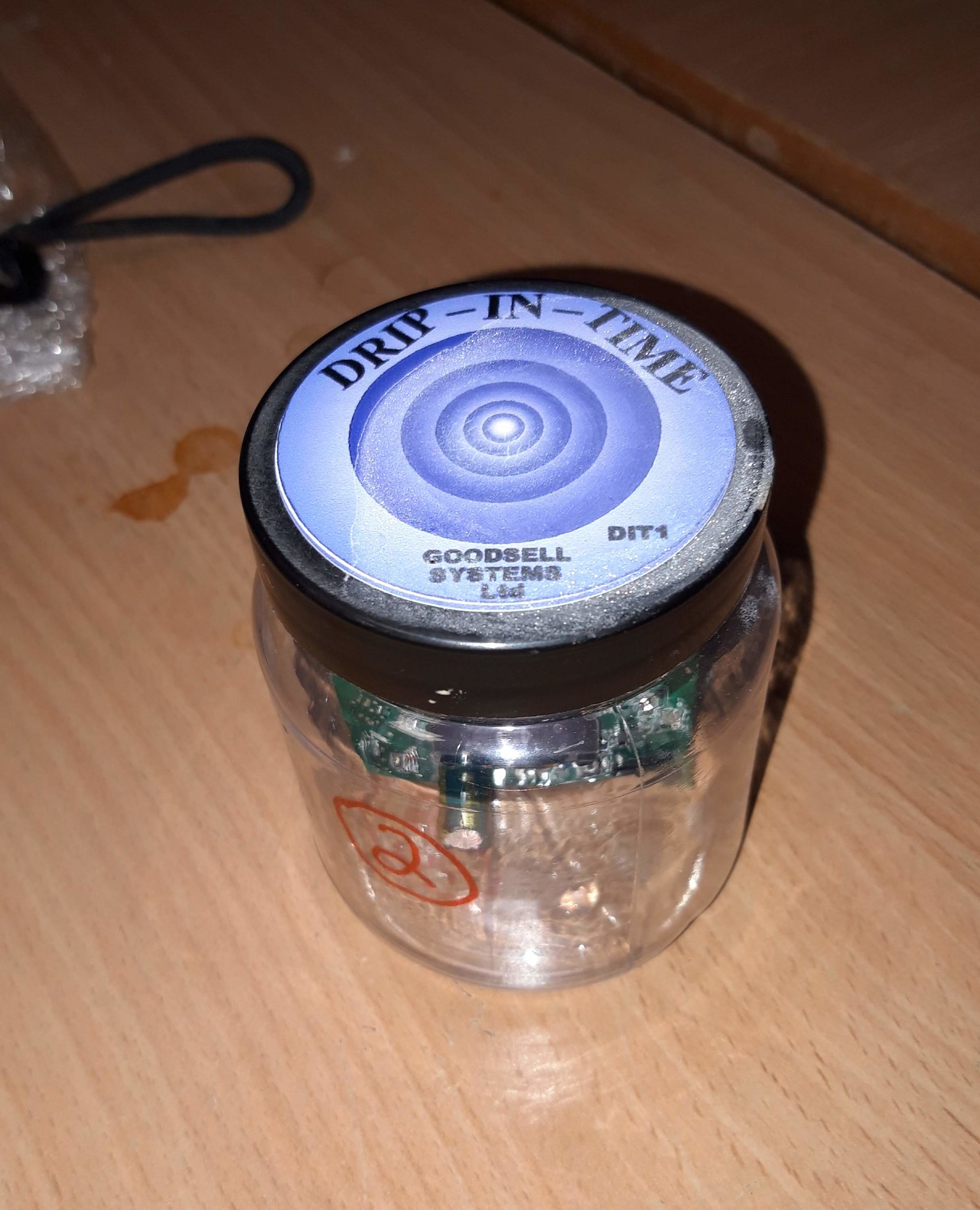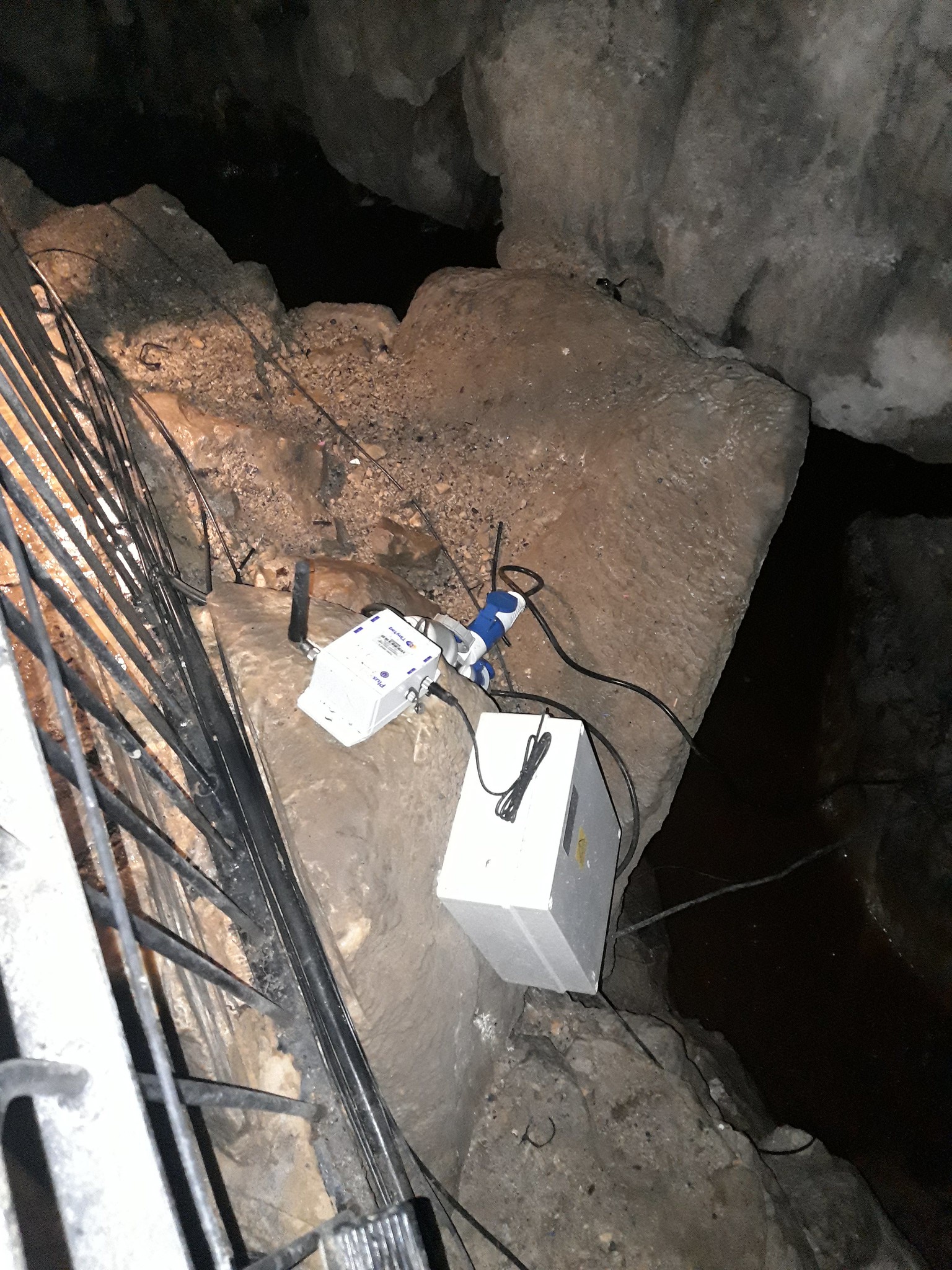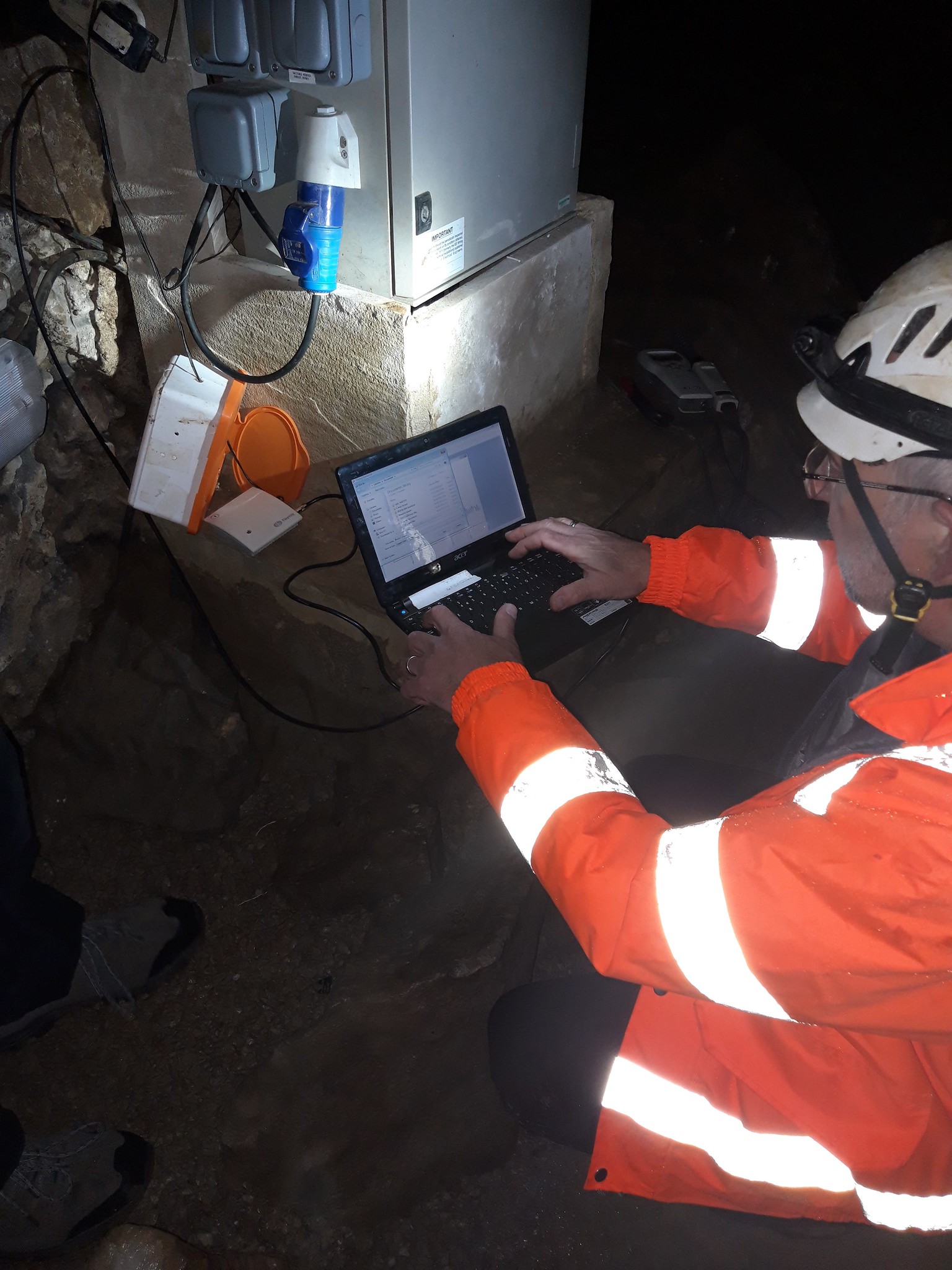
The British Cave Research Association (BCRA) recently held its Spring Field Meeting at the British Cave Monitoring Centre, Poole’s Cavern, Buxton in Derbyshire. This was an interesting day looking at cave data logging and graphical analysis of a variety of data. Andy Hall talks about what went on during the day.
The data collected during the Field Meeting included barometric pressure, carbon dioxide, radon, air circulation, drip rates and temperature measurements. There was a trip into Poole’s Cavern to see data loggers and collect data for examination in the afternoon. The session was run by Professor John Gunn and Dr Andy Smith, who have both spent some time setting up the cave as the British Cave Monitoring Centre (BCMC) to be used by anyone who has an interest in collecting and analysing data from caves. They have the full support of Poole’s Cavern management and access to the site does not involve a caving trip as such as the cave is open to the general public and has excellent safe walkways. It is also locked when not open to the public which allows data loggers to be left in situ for long lengths of time in a secure environment.
The BCMC is jointly run by BCRA and the Poole’s Cavern owners, Buxton Civic Association (usually abbreviated as BCA but referred to by John and Andy as BuxCA to avoid confusion with the British Caving Association!). In the BCMC, equipment will be provided to allow students to undertake projects, to provide long-term monitoring of cave climate and to facilitate cave-related studies and scientific research.
David Gibson has also described how this is an opportunity for BCRA’s Special Interest Group, the Cave Radio and Electronics Group, to provide tailor-made equipment for sensing, logging, and transmission of data to a website.
A series of talks in the morning discussed collecting data from caves, while the afternoon was taken up by a trip into Poole’s Cavern show cave to view instrumentation and a session in front of the computer in the data collection centre.
John started off the morning with a brief introduction and then Andy gave a detailed talk on why monitoring caves is useful science in relation to climate change. Cave monitoring may be broken down into three main sections.
1. External climate: Rainfall amount/ chemistry, air temperature, soil temperature and carbon dioxide concentration
2. Cave climate: Air temperature, carbon dioxide concentration, humidity
3. Karst and cave hydrology: flow paths, speleothem drip rates, water chemistry.
Andy’s talk was based around his PhD thesis conducted in a cave in Matienzo, Northern Spain. He collected a variety of data based on the three points above and had the help of a local ex-pat resident, who was able to collect data on a monthly basis for him. He showed a number of results and graphs of his findings related to past climates, stalagmite dating techniques using the uranium-thorium dating technique and carbon isotopes from drip rates of stalactites.
One particularly interesting finding was that there was a big change in the ratio of carbon isotopes at around a date just before 1557. His hypothesis was that this was linked to a historical event. Until that time the Matienzo area was heavily wooded and the trees were then felled to provide fuel in the ports to the north for the production of cannonballs for the Spanish navy (during the Spanish Armada). John Wilcock pointed out that for such a precise late date potassium-argon and even radiocarbon might provide usable dating measurements as well as the Uranium-Thorium dating method.

The next session, presented by John, was on the limestone hydrology of the Buxton area. John showed a series of maps, photos and diagrams explaining this. There are a series of sinks to the west and south of Poole’s Cavern including Axe Hole, Plunge Hole and Leap Edge Swallet while the risings lie to the north at Dog Hole’s, Otter Hole and Wye Head. He explained how the underground hydrology relates to the local geology, especially the orientation of the syncline and anticline axes.
Andy and John discussed how cave monitoring has been covered across the world in a number of sites, e.g. the website agreed at the 2nd International Workshop of Cave Monitoring in Innsbruck, Austria, but the UK is poorly covered although some work has been done in Mendip caves and Stump Cross Cavern, Yorkshire. They went on to explain why we need a British cave monitoring centre:
1. Cave monitoring is fundamental to supporting a range of cave based investigations such as hydrology, palaeoclimate, biology and archaeology
2. The most robust cave science projects have long term “cave climate” data to support their findings
3. It is becoming increasing difficult to set up and maintain cave monitoring sites due to funding restrictions.
4. There is a serious lack of continuous, long term data from British caves.
Funding for the monitoring centre has come from BCRA, Buxton Civic Association and Gemini Tinytag who have provided most of the loggers used in the cave. Tinytag data loggers are inexpensive, made in the UK and accurately monitor temperature, humidity, carbon dioxide and other environmental parameters. Separate stand-alone loggers provide information on air flow detection in caves especially in relation to understanding gas concentrations, notably carbon dioxide and radon. John discussed the use of various anemometers from relatively cheap Kestrel anemometers up to ultrasonic anemometers which are much more expensive but provide data on flow direction and record low velocities.

In the afternoon, the group split into two and swapped over between two activities:
1. A trip into Poole’s Cavern to see the location and set-up of the various data loggers, while John downloaded some current data from stand-alone loggers. We also collected some data loggers designed Bob Mehew and Tony Goodsell that had been placed in the cave earlier in the day. This meant they were able to calibrate their equipment against the loggers already in the cave. The cave is well floored with flags and thoughtfully lit. It has mains power all the way to the end, which is useful for loggers, although some use WiFi links to send data through a series of base stations. One bonus for the first group into the cave was the arrival of a flood pulse. When we entered the stream-channel was dry but while at the upstream end a series of gurgling noses preceded the arrival of a pulse of muddy water that we were able to follow to the downstream sink.
2. A session in the data centre located next to the cave entrance. This has the computer that collects and stores all the data logging information and we were able to look at this and download data. This data is available on the BCRA website. A web-based database has been set-up as a platform to improve and coordinate research activities in the fields of cave meteorology, karst and speleothem science, and subterranean ecology.
Finally, we all came back together for a discussion and downloaded data from the ‘test’ equipment to compare it with similar data acquired over the same time period from the Tinytag loggers. This showed up some issues with the loggers that are under development.

John Wilcock has commented that Microsoft Excel provides versatile functions for listing data and generating diagrams to compare and correlate data not just for flow (drip rate) but also for outside rainfall, outside and cave temperatures, and a large range of chemical concentrations (calcium, magnesium, sodium, potassium, carbonate, nitrate, chloride, sulphate, total hardness etc. ) if timed water samples are collected. Poole’s Cavern also has some hyper-alkaline drip-waters which absorb rather than out-gas carbon dioxide on emerging into the cave, producing rapid-growth speleothems.
This was a thoroughly enjoyable day. Thanks for organising it are due to John Gunn and Andy Smith.
Correspondent: Andy Hall, with comments by John Wilcock
